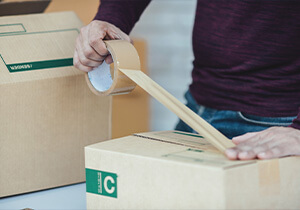In the wake of the global COVID-19 pandemic, the average consumer has become far more dependent on e-commerce and mail delivery. In fact, the sheer number of consumers who are placing product orders on online sales platforms such as Amazon has leaders in the shipping industry rethinking much of what they do.
As the supply chain and logistics industries continue to strain under the dual pressures of increased consumer demand and the obstacles of doing business in the age of COVID-19, packaging optimization measures such as cartonization are becoming more and more prevalent and important.
However, the benefits of cartonization should be evident regardless of the specific times and circumstances at hand. Furthermore, cartonization can better serve companies and their customers across a broad spectrum of markets and industries.
Cartonization Defined
Although few people outside of the shipping field are familiar with cartonization, virtually everyone is familiar with its root word “carton.” Of course, the term carton can refer to any box or container. In the shipping industry, cartons are generally known to be composed of corrugated fiberboard, liquid packaging board, or paperboard.
Briefly defined, cartonization is a process of packaging optimization that revolves around examining and evaluating multiple items in terms of height, length, width, weight, and overall shape in order to pack them most effectively into a carton of just the right form and size. Although these types of packaging decisions are often made quite quickly and with little careful attention, today’s shipping experts have significantly refined and improved the cartonization process using sophisticated software and mathematics.
The Prevalence of Cartonization
Even before the ecommerce boom that accompanied the onslaught of COVID-19, cartonization and other packaging optimization measures were already rising in popularity among shipping industry leaders and the companies that they support. The cartonization process has become a matter of supreme importance for all types of volume parcel shippers, but it has proven particularly essential in the online retail market.
Before developing and implementing new cartonization efforts, organizations must first consider basic resources such as packing materials and worker time. Not all cartonization processes are created equal!
The Benefits of Cartonization
By employing algorithms to govern how products are packed for shipment, cartonization makes the order picking and packing processes much more efficient. It not only limits the amount of empty space within cartons but will determine when it makes more sense to break large shipments into smaller boxes.
By making packing more efficient, cartonization can reduce total shipping overhead costs in a variety of ways. It also lessens overall environmental impact by cutting down on material waste.
Cartonization benefits customers as well as businesses by shortening package delivery times. In addition to receiving their orders more quickly, customers appreciate receiving all their items in a single order within an appropriately sized box that requires little or no packing filler.
Contact American Warehouse, Inc.
At American Warehouse, Inc. we offer a comprehensive warehousing solution. For more information about cartonization and other matters related to shipping, warehousing, supply chain, or logistics, contact the experts at American Warehouse, Inc. today.

